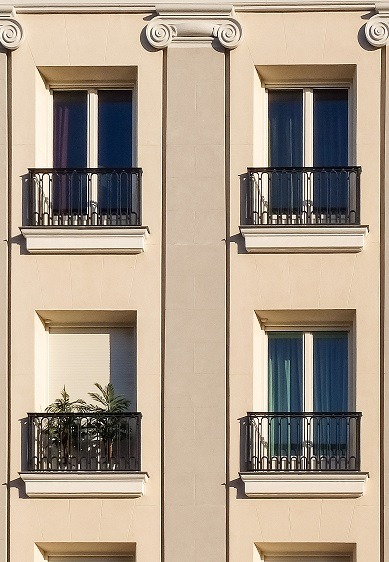In the Bay Area and Beyond, Housing Shortages Make Higher Densities Inevitable

Governments are beginning to allow accessory dwelling units where they didn’t before. They’re rezoning to allow multiple homes per lot. They have to. They’re responding to a housing crisis that needs answers. Otherwise, a state has no way to supply necessary housing in the face of pressing demand.
But hashing out the policies is no mean feat. There’s plenty of opposition to zoning-up for more housing. Residents might see “density” and think: traffic, parking, noise, and so on, in the parade of horribles that will change the character of the neighborhood. Some assume a correlation between density and poverty. (Reality is not so cut and dried. In many cities, the wealthiest sections are dense sections with high-rise penthouses, while populations in neglected areas are relatively sparse.)
Increased density can be beneficial and necessary. Supporting mid-density or high-density housing can curb sprawl, conserve natural areas, and reduce transportation needs.
In California, a Densification Bill Failed. But the Ball Could Not Be Dropped.
California’s Senate Bill 50 was meant to support midrise housing around transit hubs — a helpful thing for employers, a life changer for workers, and a good way to streamline an area’s driving patterns. It would have kept California towns and cities from downzoning (lowering density, that is) near those hubs. It would have also barred some purposefully low-density zoning — for example, striking ordinances barring homeowners from building in-law cottages on their properties.
S.B. 50 would have been effective in 2020 — had it passed. Some lawmakers faulted the bill for usurping local zoning control, even for such an important reason. What next? California still needed to deal with a housing affordability crisis — even if S.B. 50 wasn’t the method of choice.
As outlined by the Association of Bay Area Governments, in December 2021, California will issue a set of Final Allocations for creating more housing, after reviewing local appeals. Through this process, the state will apportion shares of the Bay Area’s housing goals to counties and cities. Local governments must then update their general plans to indicate where units can be added and how housing needs will be filled. In January 2022, after a public hearing, the Housing Element and Regional Housing Needs Allocation will be updated.
In short, local mandates to increase California housing may not be treated as options.
Now Enacted: Senate Bills 9 and 10.
So, in came a pair of new California housing bills to bar downzoning: S.B. 9 and 10. On Sept. 16, 2021, Gov. Newsom signed them into law. Here’s a summary of the pair of new provisions:
- Senate Bill 9, the California Housing Opportunity and More Efficiency (HOME) Act, allows duplexes to be built on some properties where they’re now prohibited, and lets owners split lots into two and sell them separately. The bill’s opponents say it could disadvantage longtime homeowners and spur gentrification. Yet there are protections in the law. Except if the owner is a community land trust or housing nonprofit, the owner would have to maintain a primary residence on one of the units for three years or more.
- Senate Bill 10, which was signed by Governor Newsom and chaptered by the Secretary of State. This bill will go into effect on January 1, 2022, will streamline approvals for urban buildings comprising up to ten units, aiming to locate more units near transit to support sufficient parking while discouraging sprawl. Proponents note that local governments will be in control of decisions to adopt the plans. Opponents warn of parking problems and pressure on infrastructure and services, and the propensity of speculators to take advantage of the opportunity and make unfair deals with disadvantaged homeowners.
These bills, as you can see, met with the familiar complaint that they were usurping local zoning control.
The Struggles Continue…
Upzoning to add housing faces a sort of Catch-22: the state has to allow affordable housing to sustain a workforce, and there’s no way to do it unless local leaders are pressed to do it. The state has to strengthen the hand of affordable housing versus local residents bent on conserving an untenable status quo.
California is managing to chip away at the long-time dominance of “single-family” zoning. Yet many tensions remain unresolved. The median price tag for a California home tops $800K, so most people have to rent. Those who save up to buy a home must position themselves to handle very high mortgage payments, with property values so high. And home prices aren’t coming down any time soon.
What’s more, the pressure to allow denser housing comes up against rules that cap building heights. In general, critics of upzoning say state law changes pose unintended perils in real life, including forced rebuilding and stressed infrastructure.
Yet the Upzoners Press On.

If there’s one thing the world of real estate needs, it’s modestly sized and priced homes. It’s no wonder support for upzoning is making headway, eroding single-unit-only zoning in California and beyond.
Encouragement for more housing units can manifest itself in a variety of forms:
- Townhouses and semi-detached homes, or duplexes.
- Multi-unit properties such as condo associations.
- The building of Accessory Dwelling Units, or in-law cottages, on a home property.
- Living in shared or streamlined spaces, such as co-ops.
All can shelter people comfortably, at lower financial and ecological costs compared to single-unit houses. With these models, more people can find ways to live where they work. And some can stop waging a constant struggle just to have a roof overhead.
It All Comes Down to Private Versus Public Interests.
Some communities are especially change-resistant. For instance, many subdivisions have deed restrictions that govern what owners can and can’t do with their properties.
Some jurisdictions, such as Austin, Texas, make private properties’ deed restrictions paramount. Thus, cities have to zone around the enclaves with deed restrictions. Homeowners opposed to zoning-up are working to scuttle laws, to make contrary laws, or to craft property-rights lawsuits. The tensions are set to continue in a time when affordable homes are in short supply from coast to coast.
Major supply-and-demand imbalances were a long time in the making. They cannot be righted overnight. California, Oregon, and other states are gradually replacing an entrenched model of single-homes-only zoning. Oregon is doing innovative work with cluster housing. Coloring outside the lines this way is important. That’s because meeting the nation’s housing supply challenges will take abundant creativity, focus and time — along with political finesse.
Supporting References
Michael Kimmelman for The New York Times: Critic’s Notebook – Everything You Think You Know About Housing Is Probably Wrong (Jan. 28, 2020).
Phillip Molnar for the San Diego Union-Tribune: Did Gov. Newsom Make the Right Economic Call Approving Senate Bill 9? (Sep. 24, 2021).
Sara Libby for the Voice of San Diego:Sacramento Report – Atkins Promises Housing Production Bill Following S.B. 50 Defeat (Jan. 31, 2020).
Marisa Kendall for the East Bay Times (Bay Area News Group): Gov. Newsom Abolishes Most Single-Family Zoning in California – S.B. 9 Allows Up to Four Units on Many Single-Family Lots (updated Sep. 17, 2021).
Alissa Walker for Curbed.com (New York): California Dreaming – Post-Recall, Gavin Newsom’s Next Big Win Is Against NIMBYs (Sep. 17, 2021).
Deeds.com: Solving the Affordability Problem—Can Deed Restrictions Include Rather Than Exclude? (Jun. 11, 2021). Photo credits: Rebrand Cities and Pixabay, via Pexels.
